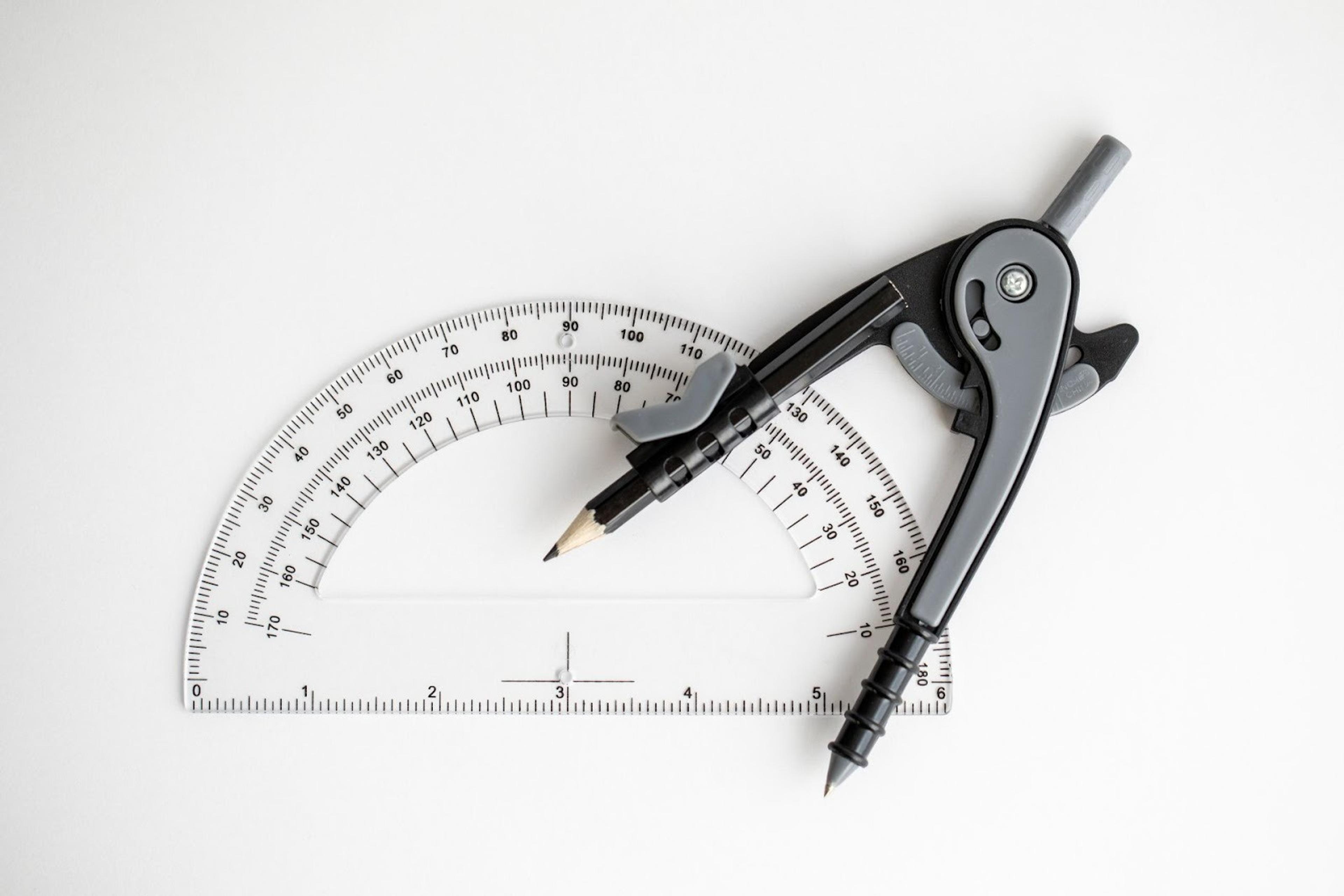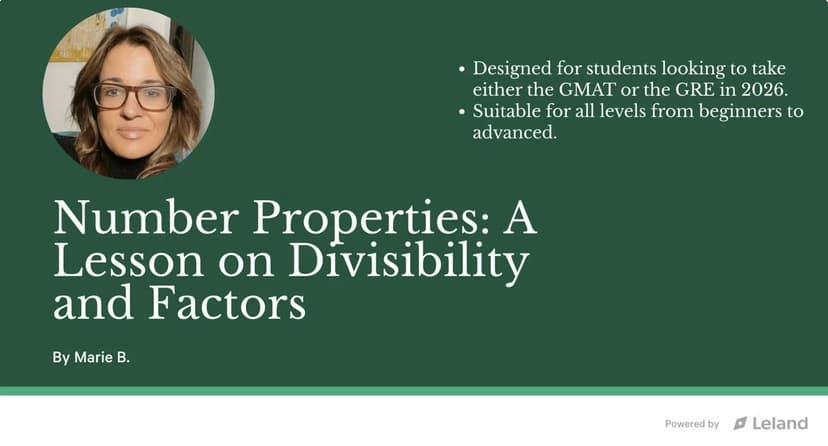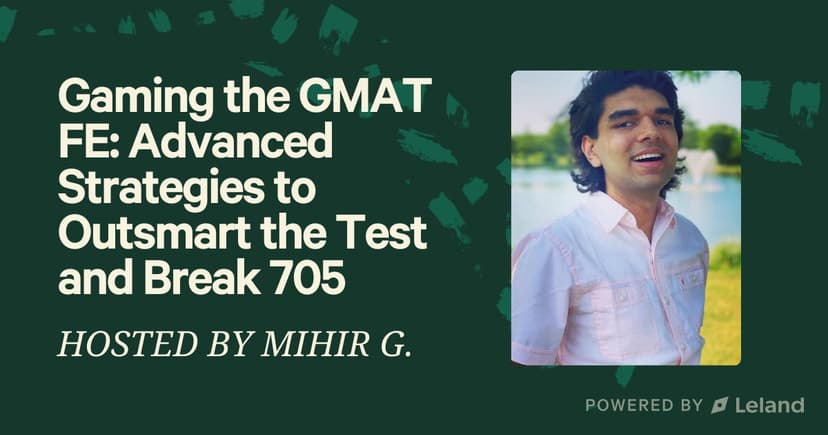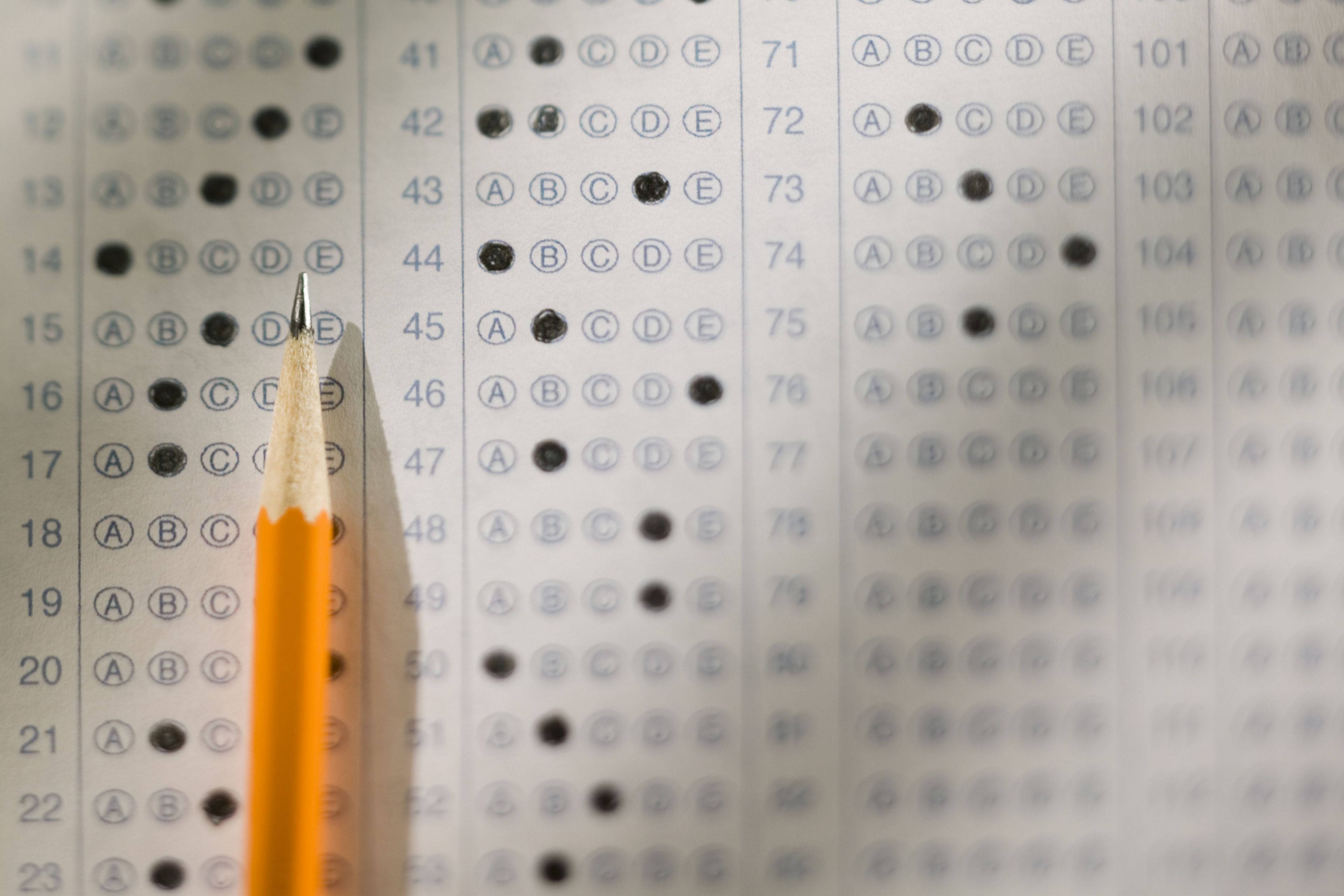
Join a free event
Learn from top coaches and industry experts in live, interactive sessions you can join for free.
Table of Contents
Is geometry still tested on the GMAT Focus? The short answer: Yes, but differently. While some formula-heavy topics have been removed or reclassified, core geometry concepts (especially those that appear in coordinate geometry, lines and angles, and triangles) still show up on the GMAT quant section. Many test-takers assume they can skip geometry altogether. That’s a costly mistake.
This guide breaks down exactly what’s tested, what’s not, and how to prep smarter, not harder, for the GMAT geometry section. We’ll include key GMAT geometry formulas, tactical tips, and real-world insights from GMAT takers who’ve sat for the new GMAT Focus Edition.
Read: GMAT Focus Sections: Overview & Structure Breakdown
What Geometry Topics Are Still on the GMAT Focus?
GMAC removed certain question types like solid geometry involving rectangular solids, surface area, and volume, but geometry hasn’t disappeared entirely. In fact, coordinate geometry, angles, and triangle reasoning still show up, especially in data sufficiency and problem-solving questions.
Geometry concepts that are still relevant:
- Coordinate geometry (slope, line equations, distance between two points)
- Lines and all the angles (including vertical angles, adjacent exterior angles, and interior angles)
- Triangles (especially right triangles, isosceles triangles, and equilateral triangles)
- Pythagorean theorem and angle relationships
- Shaded region and basic perimeter/area reasoning
"I didn’t expect any geometry, but I got a question involving a triangle in a coordinate plane with slope and distance." – Reddit user on r/GMAT
Geometry concepts that are de-emphasized:
- 3D shapes like rectangular solids and cylinders
- Circle's central angle and two radii questions (rare, but not impossible)
- Questions requiring memorization of surface area, circumference, and volume formulas
Still, GMAT Focus sometimes embeds geometry in function graphs or algebra-based coordinate problems, which is why geometry knowledge still matters.
Read: GMAT Sections Guide: What’s Tested and How to Prepare
GMAT Geometry Formulas You Still Need
Some formulas are worth memorizing even for the Focus Edition. These show up often in GMAT geometry questions across both problem-solving and data sufficiency.
| Concept | Formula |
|---|---|
| Distance between points | √[(x₂ - x₁)² + (y₂ - y₁)²] |
| Midpoint | ((x₁ + x₂)/2 , (y₁ + y₂)/2) |
| Slope | (y₂ - y₁) / (x₂ - x₁) |
| Slope-intercept form | y = mx + b |
| Pythagorean Theorem | a² + b² = c² |
| Triangle angle sum | 180° |
| Rectangle perimeter | 2 × (length + width) |
| Rectangle area | length × width |
| Circle circumference | 2 × π × radius |
| Circle area | π × radius² |
Pro Tip: Memorize only the important formulas, those most likely to appear via lines and angles, triangles, or the coordinate plane. Skip obscure 3D geometry.
Coordinate Geometry: Still Fair Game on GMAT
Coordinate geometry hasn’t been removed; it’s been reclassified under algebra or functions. But the geometry questions still demand shape-based reasoning.
Expect questions involving:
- Finding the distance between two points
- Determining whether two lines are perpendicular lines (using negative reciprocals)
- Solving for intercepts using the slope-intercept equation
- Finding whether lines intersect at a certain point
- Using the Pythagorean theorem to calculate segment lengths
Coordinate geometry on the GMAT Focus is typically a one-dimensional abstraction, testing concepts like slope and distance, not visual shapes.
Common Triangle Types on the GMAT
Although geometry is lighter in the GMAT Focus Edition, triangle knowledge remains critical, especially when it’s embedded in data sufficiency, shaded region, or coordinate geometry problems. The most commonly tested triangle types are right triangles, isosceles triangles, and equilateral triangles. Mastering these will help you move faster and avoid traps.
Right Triangles
A right triangle includes one 90-degree angle and often shows up when you're working with coordinates, slopes, or distances on the coordinate plane. They're especially important because they unlock the Pythagorean theorem: a2+b2=c2a^2 + b^2 = c^2a2+b2=c2. Two special isosceles right triangles often appear on the GMAT: the 45°–45°–90° triangle, which has side ratios of 1 : 1 : √2, and the 30°–60°–90° triangle, with side ratios of 1 : √3 : 2. These patterns let you solve problems quickly without needing full calculations.
Isosceles Triangles
An isosceles triangle has two equal sides and two equal angles. These properties are frequently tested, often indirectly, in diagrams where you're expected to infer relationships based on symmetry or angle clues. For example, if a triangle includes two angles with the same degree measure, the sides opposite those angles are also equal. The GMAT loves to test this through triangle ABC setups where you’re missing just one key piece of information.
Equilateral Triangles
An equilateral triangle has three equal sides and three 60-degree angles. It appears less often than the others but still surfaces in logic-based geometry questions or problems that rely on symmetry. If a question describes all sides as equal or refers to uniform angular measures, it’s usually pointing you toward an equilateral setup, sometimes without naming it directly.
Triangle ABC: What You Need to Know
Triangle ABC is a common setup on GMAT geometry questions. Whether it’s drawn or described, this label signals that you’ll need to determine side relationships, angle values, or apply a known formula. Every triangle on the GMAT follows the rule that its three interior angles add up to 180 degrees. If you’re given two angles, subtract them from 180 to find the third. This principle applies whether you’re working with triangle ABC, multi-shape diagrams, or polygon problems involving interior angles.
The triangle’s type often isn’t stated; you’re expected to infer it. If two sides or angles are equal, it’s likely isosceles. If all three angles are 60 degrees or all three sides are the same length, you’re dealing with an equilateral triangle. If there’s a 90-degree angle, or if it’s plotted on the coordinate plane with perpendicular lines, it’s a right triangle, and the Pythagorean theorem is in play.
Recognizing triangle types and applying the correct properties is crucial to solving GMAT geometry questions efficiently. Many problems won’t directly ask for a triangle’s type but will require you to use that classification to find a missing side, angle, or relationship. And because triangles often show up within more complex figures, like shaded regions or coordinate plane setups, being fluent in triangle logic gives you a measurable edge.
GMAT Geometry Tips: How to Study Efficiently
To succeed on the GMAT Focus Edition, you don’t need to memorize dozens of geometry formulas or grind through outdated question banks. Instead, approach geometry strategically, by understanding what’s tested, what’s not, and how to apply what you know under pressure. Here’s how top scorers prepare efficiently and effectively.
1. Ignore What’s Gone Completely
Don’t waste time studying topics that no longer appear on the GMAT Focus. That includes rectangular solids, rectangular faces, surface area, volume, and other 3D geometry concepts like cylinders or prisms. These were removed for a reason; they don’t align with the test’s updated focus on reasoning over memorization. If your prep material still includes these topics, skip them or switch resources.
2. Prioritize Triangle and Coordinate Geometry
While solid geometry is out, triangle and coordinate geometry remain highly relevant, often embedded in word problems or labeled as algebra or function-based reasoning. You may not see a triangle drawn explicitly, but you’ll still need to calculate the distance between two points, find where lines intersect, or reason about angles on a coordinate plane. Triangle properties, Pythagorean theorem, and line/angle logic are still tested, just in more subtle forms.
3. Go Deep on a Short List of Formulas
You don’t need to memorize every formula in the GMAT universe. Instead, master a core set of GMAT geometry formulas and know how to use them in flexible, multi-step contexts. Learn not just what the formulas are, but when and why to apply them, especially under data sufficiency constraints, where over-calculating can cost you both time and accuracy.
4. Train with Focus-Specific Questions
Many geometry question banks are outdated. Look for GMAT geometry practice questions that reflect the Focus Edition’s structure: shorter, tighter, more logic-driven. Prioritize official materials, updated test prep platforms, or coaches who’ve worked directly with Focus Edition students. Avoid wasting time on classic questions that test geometry concepts that are no longer relevant.
5. Sketch with Precision, Not Speed
In geometry, your diagram is often your best tool, but it’s only as helpful as it is accurate. Rushing a sketch can lead you to misjudge angle size, line segment relationships, or degree measures, all of which can derail your reasoning. Take the extra five seconds to draw clean, labeled diagrams. Use them to test assumptions, visualize what's unknown, and eliminate wrong answer choices, especially on data sufficiency problems.
Read: How to Study for the GMAT: GMAT Study Plans From an Expert GMAT Coach
Real GMAT Test Insights: What Students Are Actually Seeing
If you’re preparing for the GMAT Focus Edition, it’s easy to assume geometry is no longer worth your time. But real test-takers tell a different story. Across recent Reddit threads and student debriefs, a clear pattern is emerging: geometry isn’t gone, it’s just showing up in new, subtler ways.
Here’s what actual students are saying after taking the GMAT Focus:
“My test didn’t have any solid geometry, but I had one question that required understanding the circle’s central angle.”
“There was a shaded region problem involving perimeter and length. Didn’t expect it.”
“I skipped geometry in my prep, assuming it was gone, but my Focus test had a tricky coordinate geometry question with two endpoints and finding the distance.”
These aren’t isolated cases. Geometry is still appearing in Focus Edition exams, just not in the obvious, formula-heavy ways it did before. Instead, it’s woven into function-based questions, algebraic reasoning, or coordinate plane setups where visual logic is still critical.
Why This Matters for You
Even if geometry only shows up once or twice, those questions can be the difference between a 685 and a 715. They often look deceptively simple, but test whether you’ve kept your skills sharp. Geometry can appear in data sufficiency, in GMAT quant questions or comparisons, or hidden inside word problems that ask about shapes, diagrams, or distances.
A strategic prep plan doesn't overinvest in outdated topics, but it also doesn't leave easy points on the table. Geometry is still testable, and still high-leverage if you’re aiming for a top percentile score.
You don’t need to study all of geometry, but you do need to study the right geometry. If you ignore it completely, you're taking a real risk.
Practice Questions & Drills to Sharpen Your GMAT Geometry
Memorizing formulas isn’t enough; you need to know how and when to apply them under pressure. These targeted drills mirror how geometry shows up on the GMAT Focus, especially within coordinate geometry, data sufficiency, and problem-solving scenarios. Each drill is designed to build both conceptual understanding and test-day fluency.
1. Triangle in the Coordinate Plane
Plot a triangle using three points—e.g., A(2,3), B(6,3), and C(6,7).
- Use the distance formula to calculate all side lengths.
- Determine the perimeter.
- Analyze whether it’s a right triangle, isosceles, or scalene, based on side lengths and slopes.
- Identify any right angles by checking for perpendicular lines using negative reciprocals of slopes.
2. Line Intersection Challenge
Given two equations (e.g., y = 2x + 3 and y = -½x + 1), solve algebraically for the point where the lines intersect.
- Then plot the result and check your work visually.
- Use this to reinforce understanding of slope, intercepts, and how lines and angles relate in a coordinate plane.
3. Circle Geometry Drill
Given the circumference of a circle is 16π, find the radius, then calculate the area.
- Reverse engineer the formula: C = 2πr → r = 8
- Area = πr² → Area = 64π
- Use this to reinforce flexibility with important formulas related to circles, radii, and central angles.
4. Triangle Identification Quick Test
Sketch or review a triangle where you’re given either side lengths or angle measures (e.g., 5-5-7, or 60°-60°-60°).
- Label each as isosceles, equilateral, or right.
- Practice recognizing triangle types without being told directly, exactly like you’ll be expected to do on test day.
- Bonus: Add a constraint like “angle A and angle B have the same degree measure” and infer side relationships.
5. Data Sufficiency Warm-Up
Create your own data sufficiency prompt involving a triangle:
Q: Is triangle ABC a right triangle?
(1) AB = 3, BC = 4, and AC = 5
(2) Angle B = 90°
Analyze which statement is sufficient, and why. This builds fluency in combining geometry knowledge with DS logic.
Read: GMAT Study Tips From Pro Tutors: From 600 to 700+
Conclusion: What to Do Next
The GMAT Focus Edition may have narrowed the scope of geometry, but it hasn’t removed it, and the questions that do appear can still catch unprepared test-takers off guard. If you're aiming for a top score, you need to treat geometry as a strategic part of your GMAT quantitative section prep, not a throwaway section.
To succeed, you need a deep understanding of the most relevant concepts, especially triangles, lines and angles, and coordinate geometry. You should be fluent with a focused set of high-yield formulas, and even more importantly, know how to apply them flexibly across both problem-solving and data sufficiency formats. This isn’t about rote memorization. It’s about recognizing hidden geometry in algebraic disguises, interpreting diagrams accurately, and reasoning efficiently under pressure.
And if you want to prep with clarity and momentum, work with a GMAT coach who understands the nuances of the new exam. A great coach will help you focus on exactly what matters, avoid time-wasting traps, and build a personalized plan that gets results. Also, check out GMAT bootcamps and free events for more tips!
Read next:
- GMAT Focus Score Chart — With Percentiles
- GMAT Focus Quant: Topics, Timing, Scores, & Tips
- GMAT Focus Word Problems: Tips & Practice
- GMAT Math Questions: 5 Best Places to Go for Quant Practice
- Top 50+ Free Resources for GMAT & GRE Practice
- 3 Things You Need to Know About the New GMAT Focus Edition
- How Long Should You Actually Study for the GMAT Focus Edition?
GMAT Geometry FAQs
Does GMAT Focus include geometry questions?
- Yes, especially coordinate geometry, angles, and triangle reasoning. Solid geometry is largely removed.
Should I still study geometry for GMAT Focus?
- Absolutely. You won’t see many, but they can impact your score.
Which triangle types are tested?
- Mostly right triangles, isosceles, and equilateral.
What geometry formulas do I need?
- Distance, slope, perimeter, area, and angle sums. See our formula table above.
How many geometry questions are on GMAT Focus?
- Expect 2–4, usually hidden inside data sufficiency or function-style prompts.
Browse hundreds of expert coaches
Leland coaches have helped thousands of people achieve their goals. A dedicated mentor can make all the difference.



















